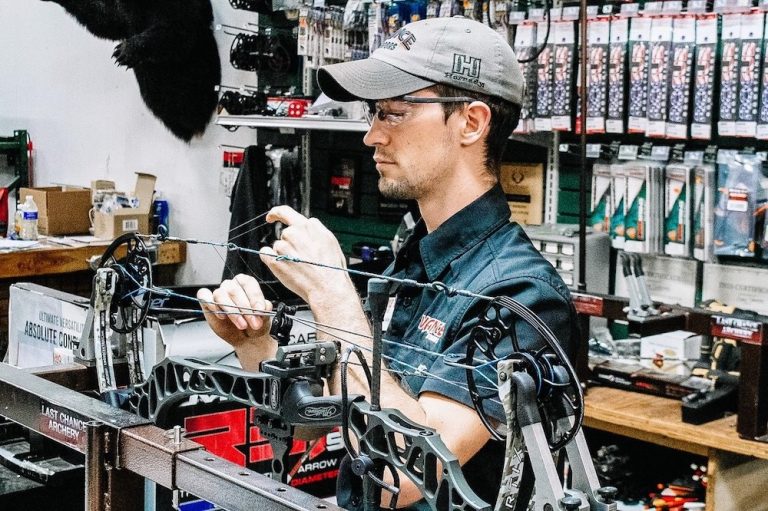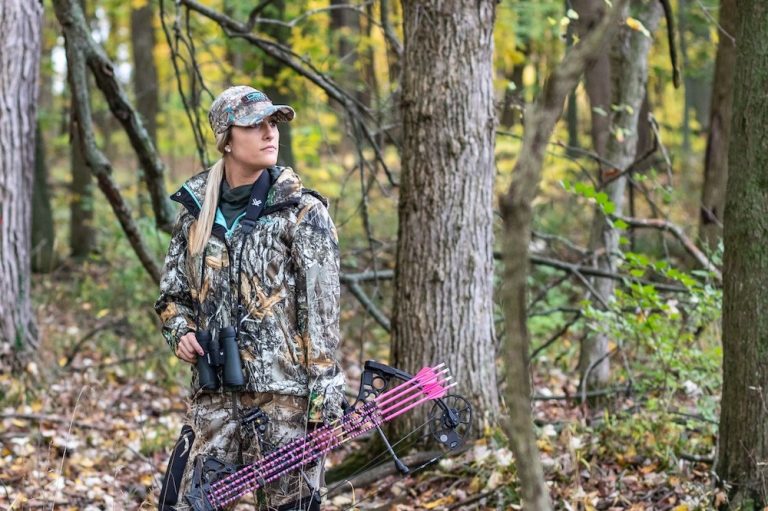Retail
What Customers Think About Your Customer Service
Find out what customer service aspects are most and least important to your customers.
Photo Credit: ATA
Customers are the lifeblood of an archery shop. They buy products, spend time on the range, and refer their friends and family members. These things support and strengthen your business, which is why customer service is important to focus on.
We spoke to two bowhunting enthusiasts who rave about the experience and customer service they receive at their go-to archery shops.
Richard Cologie is a retired law enforcement officer from Ohio who’s bowhunted for 42 years. He’s used a recurve, a compound and a crossbow, and he’s introduced his children to bowhunting. He’s been to several archery pro shops but remains loyal to Vance Outdoors in Hebron, Ohio. “Once we started going there, their service and willingness to help kept us there,” he said.
Kevin Harlander is the director of community for First Lite, a hunting clothing and apparel company. He started bowhunting in 2009 and introduced his significant other to archery three seasons ago. He was born in Minnesota, moved to Oregon, and currently lives in Idaho. He’s “been around the block” with archery shops and said Alpine Archery and Fly in La Grande, Oregon, is his favorite. Sometimes he drives 6 hours (300 miles) to have the owner, John Appleton, build him specialty items, like heavy arrows.
“I work in the industry and understand the customer service side of things is huge,” he said. “John has always been a guy that meets you where you’re at. Whether you’re a brand-new hunter or you’ve been doing it for 20 years, he’s got a system in place to make sure you get the best setup available.”
Both guys shared what they love about their favorite archery shop, as well as what they didn’t like about other locations. They also discussed how business owners can separate their shop from the competition.

Make sure you're listening to the customers' needs. Photo credit: Alpine Archery and Fly
Both Cologie and Harlander ranked this as one of the most important elements of a positive interaction. They want a pro shop employee that tailors the equipment and experience to their unique, individual needs. For example, Cologie likes that he can bring in an older bow and have the technician help him repair it to good working order rather than being told to start with something new.
Harlander said Alpine Archery and Fly has extended hours during the archery season and is open when he needs it to be. Therefore, there isn’t a lot of waiting or wasted time. “If you’re cordial with your request, there isn’t a lot of waiting time,” he said. “John is quick and gets things done because he works long hours.”
All customers want to work with someone genuine, knowledgeable, experienced and trustworthy. Cologie said it seems like everyone at Vance Outdoors is a bowhunter and can fully participate in the conversation. “I want to work with someone who hunts and can relate to hunting,” he said. “I’ve been to places where employees couldn’t answer my questions or faked their way through the conversation. I wasn’t impressed and never went back.”
Bowhunting is a challenging sport to break into alone. Harlander said Appleton does a great job at helping people of all ages and abilities get set up and feel comfortable shooting. Helping newcomers eliminate fear and overcome obstacles makes them feel like they belong.
Cologie said the people at Vance Outdoors are open and honest about price, equipment strengths and weaknesses, and how long customers have to wait to work with a staff member. “Sometimes I’ll have to wait because they’re busy, but they have a good ticketing system in place so everyone knows where they stand as far as when they’ll be waited on,” he said. “You’re not walking around like you’re in a fog.”

Don't try to push a particular product. Suggest multiple options in the right category. Photo Credit: Vance Outdoors
Cologie and Harlander both hate it when someone tries to upsell them or push products they don’t want or need. Salespeople who care more about selling products than they do about making customers happy usually don’t succeed at either thing.
Not giving customers the time or attention they need is a top concern for Harlander. “A lot of shops are a good ol’ boys club, and if you’re new, you’re not welcome, but John pushes that aside and opens the door to anyone and everyone,” he said. “He breaks things down (for newcomers) and teaches them how to be successful while instilling confidence.”
It’s natural for employees to recommend products they like, but they shouldn’t push their own partialities on customers. Cologie appreciates when a sales associate suggests a few items, but he dislikes it when they corner him into one option. He says the folks at Vance Outdoors are good at listening and reacting to the customer’s needs.

Make sure the customer walks away feeling a personal connection with your shop and goes to the range or on a hunt with confidence. Photo Credit: Vance Outdoors
People can buy gear anywhere. To make your business stand out, you have to provide the best service and experience. Cologie said that’s the deciding factor.
“(Vance Outdoors) treats people good, and they treat them the same,” he said. “If they didn’t, I wouldn’t go back. There are so many good pieces of gear you can get anywhere. It comes down to how you’re treated. If I didn’t enjoy being there, I would go elsewhere or shop online.”
Harlander suggested online retailers provide an online consultation with customers to give them a better shopping experience. And brick-and-mortar retailers can create similar opportunities for their customers concerned about COVID-19. Strive to connect with your customers in as many ways as possible.
“The world has changed quite a bit,” he said. “The people (and businesses) who adapt are the ones whosurvive.”
https://youtu.be/aN91NnrRkPQ
Cologie and Harlander provided great insights into what most customers care about regarding customer service, but every shopper is different. Don’t assume you know what your customers think. Instead, go straight to the source, ask them and carefully listen to their concerns and questions.
Another good tip is to consider how long customers stay in your shop after you finish helping them. Cologie and Harlander said they’re excited to visit their go-to shops, and they like hanging out there because they enjoy the staff and service so much. Observe your customers to see how they relate to and interact with the sales staff. Their body language can be very telling.
ATA’s article “How to Tell If New Customers Like Your Shop” outlines three methods to get honest, unbiased customer opinions. You can observe newcomers, have customers complete an anonymous survey or hire a secret shopper. Businesses can use one method — or all three — to better understand what customers think about their customer service, so they can make improvements.

WE ARE HERE TO HELP THE INDUSTRY, TO HELP INDIVIDUAL BUSINESSES GET THE MOST OUT OF THE INDUSTRY, AND TO HELP YOU.